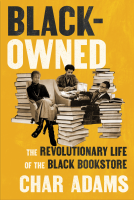
Jim Crow Terminals
The Desegregation of American Airports
by Anke Ortlepp
This title was previously available on NetGalley and is now archived.
Send NetGalley books directly to your Kindle or Kindle app
1
To read on a Kindle or Kindle app, please add kindle@netgalley.com as an approved email address to receive files in your Amazon account. Click here for step-by-step instructions.
2
Also find your Kindle email address within your Amazon account, and enter it here.
Pub Date Jul 01 2017 | Archive Date Jun 07 2017
Description
Historical accounts of racial discrimination in transportation have focused until now on trains, buses, and streetcars and their respective depots, terminals, stops, and other public accommodations. It is essential to add airplanes and airports to this narrative, says Anke Ortlepp. Air travel stands at the center of the twentieth century’s transportation revolution, and airports embodied the rapidly mobilizing, increasingly prosperous, and cosmopolitan character of the postwar United States. When segregationists inscribed local definitions of whiteness and blackness onto sites of interstate and even international transit, they not only brought the incongruities of racial separation into sharp relief but also obligated the federal government to intervene.
Ortlepp looks at African American passengers; civil rights organizations; the federal government and judiciary; and airport planners, architects, and managers as actors in shaping aviation’s legal, cultural, and built environments. She relates the struggles of black travelers—to enjoy the same freedoms on the airport grounds that they enjoyed in the aircraft cabin—in the context of larger shifts in the postwar social, economic, and political order. Jim Crow terminals, Ortlepp shows us, were both spatial expressions of sweeping change and sites of confrontation over the renegotiation of racial identities. Hence, this new study situates itself in the scholarly debate over the multifaceted entanglements of “race” and “space.”
A Note From the Publisher
Anke Ortlepp is a professor of British and American history at the University of Kassel. Her books include Germans and African Americans: Two Centuries of Exchange, coedited with Larry A. Greene. Part of the Politics and Culture in the Twentieth-Century South series.
Available Editions
| EDITION | Other Format |
| ISBN | 9780820351216 |
| PRICE | $26.95 (USD) |
| PAGES | 216 |
Links
Average rating from 7 members
Readers who liked this book also liked:
David Lavender; Julie Lavender
Christian, Crafts & Hobbies, Entertainment & Pop Culture
Chris Robinson; Orrin C. Evans
Comics, Graphic Novels, Manga, History, OwnVoices
James McBride
General Fiction (Adult), Historical Fiction, Literary Fiction


















